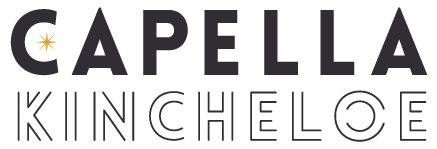Work Smarter, Not Harder
I whole-heartedly believe in working smarter and not harder. And based on the amount of inquiries I receive about this topic, it seems like you might too. I would rather work 20 focused hours in a week than filling 40 hours with who knows what just because that is the “standard”. When you own your own business this is within the realm of possibilities, you just need to work smarter and not harder.
One of the things that I’ve been working on lately is the focused part - not letting distractions (ahem, I’m talking to you social media and email checking) interrupt my work flow. It’s a challenge to retrain myself this way.
But just imagine how much more you could get done if you eliminated some of these chronic distractions, created a work routine (like mornings for meetings, Thursdays for accounting or office hours), and paid attention to what you repeatedly do and created systems around it.
Tracking your time is the best way to examine where it’s going. By doing that you’ll know what is working (or not) and where you need to work on the distractions, routine, and your systems.
You can’t magically one day begin working smarter, not without some insight into how you are currently working and the areas that need improvement.
The key to all of this is systems - or routines, processes, methods, habits, and procedures - whatever you’d like to call it, the key is to have systems for the things that you regularly do.
This is how you work smarter. You make your time work for you, but you do have to invest time to set them up well so they can work for you. And really I think this is where most people stumble is that they continue working harder - thinking they’re already too busy to do stop and create a system, even when that system will save time in the future.
Here is how I think of it, imagine if you’re planting a garden and every day you go out and dig a little hole, you might put a little plant food in the hole and drop the seed in, cover the hole and give it a little water. The next day you do all those steps again, each time putting all your tools - the seed packets, watering can, the gardening spade, the plant food, the plant markers away. This is what most of us are doing in our business operations, working harder. Repeating the same steps over and over without formalizing a system for it so we can work smarter, not harder.
But what if instead of planting one seed a day, you planted the whole row, it may take a little longer initially, but you’re not repeating tasks. This is what systems do: allow you to work smarter.
Because once you have your system in place, it’s much easier to sail through that process without thinking about each and every step, what you’re going to do next, and if it’s the right move.
I’ve written before how to design business systems and next week I’ll be sharing one specific system that I created that changed my business.
Implementation
If you’re up for the challenge, I’d like you to create a small business system right now. If you have something in mind, do that, if not, create a system around how you’ll answer new client inquiries.
This would be my workflow:
Have client inquiry sheets printed and handy in office for all pertinent client info (name, email, phone, location, notes, etc).
Prospect calls and leaves a message (because I rarely answer my work phone).
Capella returns call within 12 business hours
Go through info on client inquiry sheet to determine if it’s a good fit.
If so, schedule in-person meeting.
If not, Turn Down Project Like a Pro.
I may also set a page on my website where a client could schedule a 20 minute discovery call to discuss. Or maybe I would require a questionnaire to be completed before the call. Or maybe I would have an office manager do the initial screening call. There could be many variations on this system depending on what works for your office.
The point is to get something down so you don’t have to think about what you’re going to do next every single time.
Give it a try and leave a comment letting me know how it goes!
Get a blueprint for your design business that allows you to work smarter and not harder. That starts with The Golden Blueprint!
Registration for the next session will open soon. Join the mailing list to be the first to know when it opens.
By signing up you will receive weekly emails and occasional promotional emails. We may collect, use, and process your data according to the terms of our Privacy Policy.





